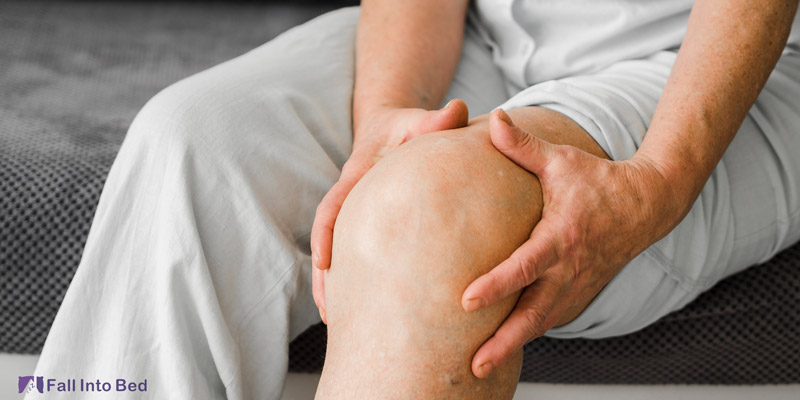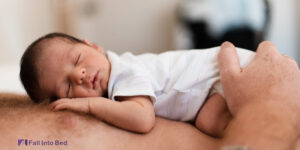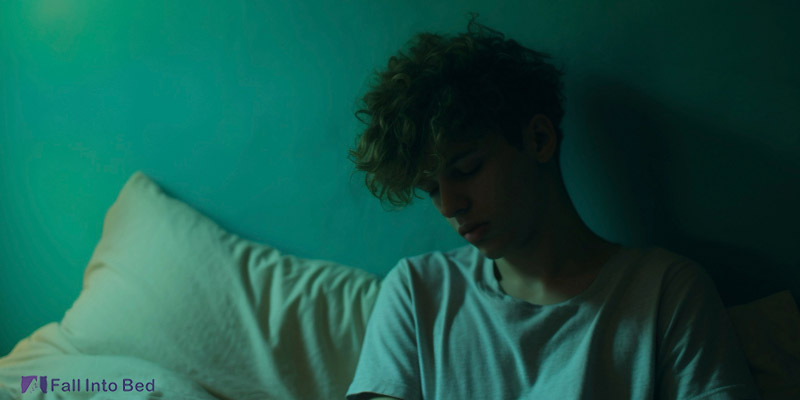Knee pain is one of the most annoying and exhausting pains you can ever feel and the worst time to suffer from it, is during sleep. One of the causes of outer knee pain is IT band syndrome which can leave you with a burning pain on the outside of your knee. In this article we will talk about this syndrome and the best sleeping position for IT band pain.
Understanding IT band and ITB syndrome
In order to talk about the sleeping positions that are helpful for IT band pain, we need to know what IT band is and how it can get painful and how we can avoid it.
Iliotibial band or IT band, is made of thick fibers that start from the outside of your thigh all the way to the outside of thigh and knees, and attaches to the top of your shin bone, under your knee.
Normally, when your IT band crosses over the knee, there is something called bursa that can help this band to move smoothly when we bend or straighten our knee. The problem occurs when the band gets too tight and creates friction during movement. This friction causes the band and its bursa to swell and result in pain around your knee. This issue is called IT band syndrome.
This syndrome is usually seen in runners, cyclers and hikers. Other activities and factors that can increase the risk of getting iliotibial band syndrome are as followed:
- Not doing enough warm up and stretch before exercise
- Distance running
- Basketball
- Soccer
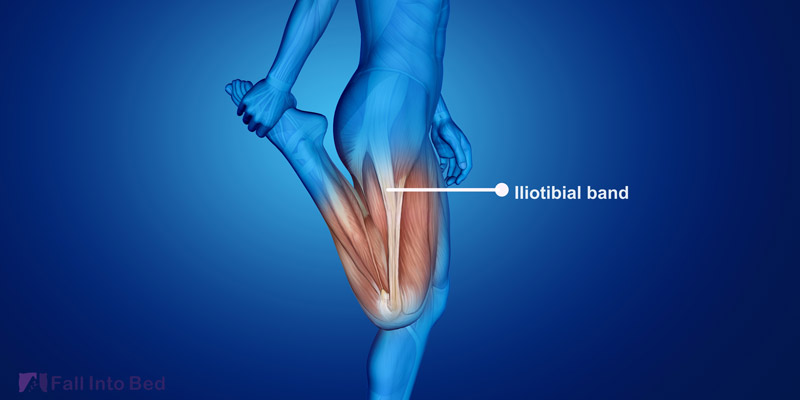
Symptoms of IT band syndrome
As we mentioned, the most obvious sign of this symptom is pain on the outer side of your knee, slightly higher than the joint. The pain tends to get worse during running or coming down the stairs.
Other symptoms are:
- Feeling a pop or click sound on the outer side of your knee when moving it
- Tenderness or a burning sensation on the outside of your knee
- redness on that area
Is it IT band syndrome or just knee pain
Depending on the symptoms that you experience and the painful area, it can be IT band syndrome or something else. it’s important to consult a doctor if you have any of these signs, or if one gets worse in time.
Analyzing sleeping positions for IT band pain
Now that we know what IT band is and how it can get painful, let’s talk about the best sleeping positions for this problem. Sleeping in the wrong position can create more friction in the painful area and worsen the symptoms. Also, it’s extremely hard to fall asleep with severe knee pain. So, it’s very important to know about the pros and cons of each sleeping position to reduce the pain from IT band syndrome.
1. Sleeping on the affected side
This position is a tricky one. Sleeping on the affected side can potentially reduce pressure on the band if supported correctly. But, if the knees are not supported with a pillow in between, it can misalign the spine and also put more pressure on the affected IT band. A proper mattress and pillow is essential for this position.
2. Sleeping one the unaffected side
Sleeping on your side with the affected knee up, can reduce pressure from the painful IT band and alleviate the pain. Though it’s important to support the knees with a pillow to keep the spine aligned and avoid any strain. Overall, will the right support, this is a good sleeping position for IT band pain.
When choosing a side to sleep on, you should checkout the differences between sleeping on the right side and left side, to make sure the position does not interfere with another condition. For instance, if you are pregnant, or suffer from high blood pressure, or acid reflux, sleeping on the right side might not be a good idea. You should also ask your doctor about the right sleeping positions in theses situations.
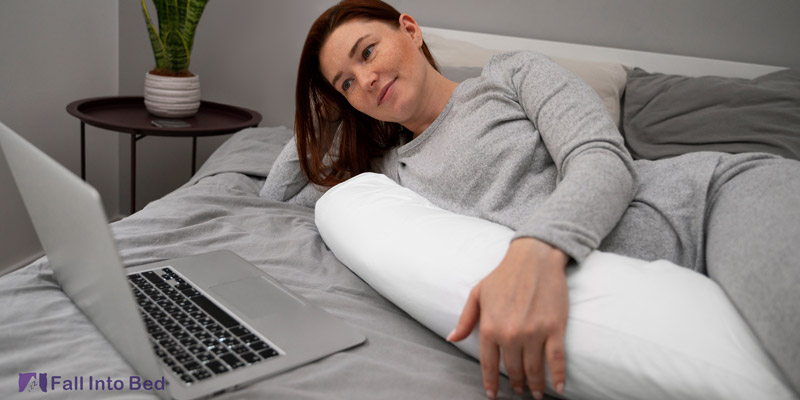
3. Back sleeping (supine)
Back sleeping is helpful due the even distribution of weight. This position can also reduce lower back pain since it can keep the spine aligned.
this pose can reduce the risk of IT band friction and strain. And sleeping on the back with arms above head can potentially help your circulation system and respiratory function.
However, keep in mind that this is not a good position for people with breathing problems as it can narrow the airways and increase sleep apnea symptoms or snoring.
Another perk on this position is for people who suffer from PAD. Sleeping on the back with extra pillow to elevate your head can be very beneficial for this disease.
4. Sleeping on stomach (prone)
Though this position decreases direct pressure on the hips and can potentially reduce IT friction, it’s usually not recommended for IT band syndrome as it can cause additional musculoskeletal problems like spine misalignment and discomfort in the knees and hips.
5. Fetal position
Sleeping on the side with knees bent near the chest can reduce pressure on the IT band and alleviate strain no the back. Though it’s recommended to support the knees with a pillow.
How to manage IT band pain
If you get enough rest and follow your doctor’s orders, you can usually recover from this syndrome in six weeks. However, there are exercises that can fasten this process and alleviate your pain during the recovery. Putting ice pack for 10 minutes at a time and painkillers can help with the swelling and pain.
- Stretching; Stretching the muscles near the IT band can keep the normal range of potion and alleviate pain.
- Massage; Massaging the painful area and around it can also help with the recovery time.
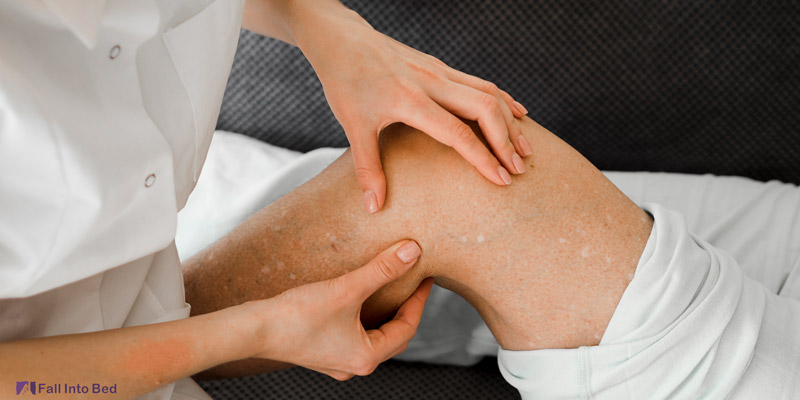
FAQ about sleeping position for IT band pain
What happens if you neglect your ITB syndrome?
Leaving IT band syndrome intreated can cause scarring in the bursa and limit your range of motion and leave you in pain.
What is the best sleeping position for IT band pain?
The best position for hip or knee pain is either sleeping on the back with knees slightly elevated, or on the side with a pillow between the knees.
Does the IT band pain get worse at night?
The knee pain caused by ITB syndrome is a burning or a bad aching that tends to get worse at night and near bed time.

